Sounds reasonable, until you look at the Silicon Valley experience. Silicon Valley grew like a weed precisely because employees could…
News 9/21/11
Aetna, Humana, Kaiser Permanente, and UnitedHealthcare will pool five billion medical claims records in a data mining initiative to identify trends in cost, utilization, and intensity of care. Beginning in 2012, the not-for-profit Health Care Cost Institute will combine 11 years’ worth of records from the carriers, publish scorecards, and support analysis of aggregate trends to qualified researchers.
Reader Comments
![]() From Wilbur: “Re: Aventura. Did you already get this? You interviewed Howard Diamond for the HIStalk Innovator Showcase. Really neat company, people, and technology.” Denver-based Aventura HQ, which offers a clinician front end for EMRs and other systems, raises $13 million in its first round of institutional vendor funding. I profiled the company in late July. Wilbur isn’t a shill, by the way – he sent this non-anonymously and he has no vested interest in the company (nor do I.)
From Wilbur: “Re: Aventura. Did you already get this? You interviewed Howard Diamond for the HIStalk Innovator Showcase. Really neat company, people, and technology.” Denver-based Aventura HQ, which offers a clinician front end for EMRs and other systems, raises $13 million in its first round of institutional vendor funding. I profiled the company in late July. Wilbur isn’t a shill, by the way – he sent this non-anonymously and he has no vested interest in the company (nor do I.)
![]() From Elane Twofer: “Re: UPMC electronic medical records alteration. I’m puzzled why that is central to peer review. Mr. HIStalk, please provide some advice and your wonderful wisdom.” The trial begins in Pittsburgh of a lawsuit brought by a deceased patient’s family against UPMC Presbyterian (PA). The family claims that doctors caring for a 62-year-old inpatient failed to note in his electronic medical record that he would be difficult to intubate. He experienced respiratory distress, exacerbated by a nurse who inappropriately gave him a tranquilizer to calm him down, and doctors could not establish an airway. He died. The family’s attorney says UPMC’s EMR transaction records show that its head of quality assurance tried to add a red-letter “Dif Intub” warning to his EMR three days after he died. The hospital says the entry was for peer review purposes rather than to favorably falsify the records. I know this reader and I believe the hope is that I’ll expound against EMRs from this example, but I’ll take the opposite approach. I’ve been on various hospital committees (death, tissue and transfusion, etc.) and I’ve seen first hand paper charts that were falsified after the fact by doctors and nurses to cover their butts after making mistakes that harmed patients. It wasn’t hard to suspect they did it (the handwriting was clearly different, the change was present only on the original order and not the copy, etc.) but hard to prove. If the family is correct, UPMC’s own electronic records will provide the inarguable evidence. Score: EMR 1, paper 0. I’d like it even better if standards were in place that would physically protect all electronic documentation transactions from database-level changes, journaling every entry, change, and deletion as a permanent record that even IT uber geeks could not destroy.
From Elane Twofer: “Re: UPMC electronic medical records alteration. I’m puzzled why that is central to peer review. Mr. HIStalk, please provide some advice and your wonderful wisdom.” The trial begins in Pittsburgh of a lawsuit brought by a deceased patient’s family against UPMC Presbyterian (PA). The family claims that doctors caring for a 62-year-old inpatient failed to note in his electronic medical record that he would be difficult to intubate. He experienced respiratory distress, exacerbated by a nurse who inappropriately gave him a tranquilizer to calm him down, and doctors could not establish an airway. He died. The family’s attorney says UPMC’s EMR transaction records show that its head of quality assurance tried to add a red-letter “Dif Intub” warning to his EMR three days after he died. The hospital says the entry was for peer review purposes rather than to favorably falsify the records. I know this reader and I believe the hope is that I’ll expound against EMRs from this example, but I’ll take the opposite approach. I’ve been on various hospital committees (death, tissue and transfusion, etc.) and I’ve seen first hand paper charts that were falsified after the fact by doctors and nurses to cover their butts after making mistakes that harmed patients. It wasn’t hard to suspect they did it (the handwriting was clearly different, the change was present only on the original order and not the copy, etc.) but hard to prove. If the family is correct, UPMC’s own electronic records will provide the inarguable evidence. Score: EMR 1, paper 0. I’d like it even better if standards were in place that would physically protect all electronic documentation transactions from database-level changes, journaling every entry, change, and deletion as a permanent record that even IT uber geeks could not destroy.
![]() From Ludmila: “Re: NJ chapter of the American Academy of Pediatrics. Apparently there’s about to be a blowup over its PCORE (Pediatric Council on Research and Education) section accepting money related to referring practices for HITECH, which it isn’t allowed to do as a 501(c)(3) corporation.” Unverified. I e-mailed the organization and received no response.
From Ludmila: “Re: NJ chapter of the American Academy of Pediatrics. Apparently there’s about to be a blowup over its PCORE (Pediatric Council on Research and Education) section accepting money related to referring practices for HITECH, which it isn’t allowed to do as a 501(c)(3) corporation.” Unverified. I e-mailed the organization and received no response.
![]() From Sepulchre: “Re: Meaningful Use. Frequent reader, first time I’m posting a question. No one has been able to answer this. In getting your ‘certified’ system and achieving MU, what happens if the user decides to change vendors? During that kind of transition, you would expect your reporting on objectives could be impacted and you might not meet them for the year. Do you incur penalties from Medicare during that time? Seems like a great setup for vendors. Once you use them and achieve MU, you must keep using them to avoid penalties.” Hopefully my really expert readers will weigh in.
From Sepulchre: “Re: Meaningful Use. Frequent reader, first time I’m posting a question. No one has been able to answer this. In getting your ‘certified’ system and achieving MU, what happens if the user decides to change vendors? During that kind of transition, you would expect your reporting on objectives could be impacted and you might not meet them for the year. Do you incur penalties from Medicare during that time? Seems like a great setup for vendors. Once you use them and achieve MU, you must keep using them to avoid penalties.” Hopefully my really expert readers will weigh in.
![]() From Reluctant Epic User: “Re: McKesson ad. Do you think they’re struggling in the large hospital market because their marketing department thinks people are still running Pocket PCs?” I like the irony of the “Better Technology” headline right beside some old and not-so-good technology, but their problems are more related to Horizon than what it runs on.
From Reluctant Epic User: “Re: McKesson ad. Do you think they’re struggling in the large hospital market because their marketing department thinks people are still running Pocket PCs?” I like the irony of the “Better Technology” headline right beside some old and not-so-good technology, but their problems are more related to Horizon than what it runs on.
![]() From Space Ghost: “Re: newsletter. Writing headlines must be a tough job.” The mistake is especially notable since it came from Government Health IT, whose parent company has HIMSS (or HIMMS, if you prefer) as a majority owner. The correct spelling is obviously the first word of the article, so someone went out of their way to screw it up.
From Space Ghost: “Re: newsletter. Writing headlines must be a tough job.” The mistake is especially notable since it came from Government Health IT, whose parent company has HIMSS (or HIMMS, if you prefer) as a majority owner. The correct spelling is obviously the first word of the article, so someone went out of their way to screw it up.
Acquisitions, Funding, Business, and Stock
Practice Fusion announces that it has received over $6 million in additional funding from several new investors, including Western Technology Investment (an early Facebook investor) and Scott Banister (Idealab, IronPort.)
EMR vendor SuccessEHS acquires the MediaDent practice management, electronic dental record, and dental imaging solution from MMD Systems. SuccessEHS will offer the integrated solution to Community Health Centers, including the 190 that are already its customers.
Transcription vendor MedQuist raises guidance and announces a $25 million stock repurchase program following its recent acquisitions of M*Modal, All Type Medical Transcription Services, and JLG Medical Transcription Services.
India-based technology vendor Wipro says it’s looking to acquire US-based health and life sciences companies, especially those with analytics and mobility products and companies involved in revenue cycle management. Wipro also says it will benefit from ICD-10 conversions as US work is offshored to India and the Philippines.
![]() The Advisory Board Company launches its new logo and Web site, which emphasize its research work plus newer offerings that focus on technology applications and healthcare support. An interesting history of its logo over the years says it started as a drawing of the townhouse owned by the founder’s mother (the company’s first headquarters, in 1979), followed by the Jefferson Memorial-related logo that was used for 20+years, then finally the new version that’s based on a revolving bookstand designed by Thomas Jefferson to allow him to check multiple references at once, a prototype of the database (which also happens to look like the letter A.)
The Advisory Board Company launches its new logo and Web site, which emphasize its research work plus newer offerings that focus on technology applications and healthcare support. An interesting history of its logo over the years says it started as a drawing of the townhouse owned by the founder’s mother (the company’s first headquarters, in 1979), followed by the Jefferson Memorial-related logo that was used for 20+years, then finally the new version that’s based on a revolving bookstand designed by Thomas Jefferson to allow him to check multiple references at once, a prototype of the database (which also happens to look like the letter A.)
![]() I keep forgetting that The Advisory Board Company is publicly traded, so here’s how shares have done over the past couple of years compared to the S&P 500 (green) and Nasdaq (red). An ABCO share bought for around $25 two years ago would be worth over $60 today.
I keep forgetting that The Advisory Board Company is publicly traded, so here’s how shares have done over the past couple of years compared to the S&P 500 (green) and Nasdaq (red). An ABCO share bought for around $25 two years ago would be worth over $60 today.
People
Meditech announces that family physician Steven Jones, MD will join the company to act as lead its EHR development efforts. He has served on the company’s Physician Advisory Committee.
MedAssets reports in an SEC filing that Neil Hunn, president of revenue cycle technology, is leaving the company to pursue “other career opportunities.” He joined the company in 2001, was promoted to RCT president in January 2011, and leaves with $570,000 in separation pay. Meanwhile, Greg Strobel (above) moves from president of the revenue cycle services business to president of the MedAssets RCM segment.
Bayhealth Medical Center (DE) names Lynn Gold as senior director of information services and telecommunications. She was previously with GE Healthcare.
Announcements and Implementations
![]() University of Iowa Hospitals and Clinics spent $6 million on a failed laboratory information system implementation, hospital officials reported to the state Tuesday. The hospital terminated the contract over performance issues with the unnamed vendor. I know its pathology department was replacing Cerner with SCC Soft Computer and was supposed to go live a few months ago, but I don’t know if that’s the system being de-installed.
University of Iowa Hospitals and Clinics spent $6 million on a failed laboratory information system implementation, hospital officials reported to the state Tuesday. The hospital terminated the contract over performance issues with the unnamed vendor. I know its pathology department was replacing Cerner with SCC Soft Computer and was supposed to go live a few months ago, but I don’t know if that’s the system being de-installed.
Voalté will offer a mobile device management solution called Connect, which is based on the AirWatch enterprise-grade smartphone and mobile device security
and management platform.
![]() The local TV station covers the use of the PatientSecure palm vein scanning system for positive patient identification at Duke University Hospital (NC). The hospital enrolled 2,000 patients in the first six weeks and says patients who were antsy about having their fingerprints scanned (one can only imagine why) don’t mind the palm vein scan.
The local TV station covers the use of the PatientSecure palm vein scanning system for positive patient identification at Duke University Hospital (NC). The hospital enrolled 2,000 patients in the first six weeks and says patients who were antsy about having their fingerprints scanned (one can only imagine why) don’t mind the palm vein scan.
Ottawa Hospital, fresh off the deployment of 2,000 mobile devices including iPads, says the next step is to use business process modeling to understand the natural workflows of clinicians and to give them convenient information when and where they need it. A quote from SVP/CIO Dale Potter:
Mobility is here to stay. It’s tactical in a sense because it is a device that allows people to do their work differently. Physicians and other clinicians are falling back into workflows that are natural to the work they are doing. They were forced out of that workflow with the advent of technology 25 years ago when they would have to go somewhere to log on to a PC. They had almost forgotten that they used to do rounds at the bedside. Now it’s conceivable and practical for them to be able to do that. The patients feel a higher level of engagement because of the tools.
Ophthalmologists at a UK hospital work on OpenEyes, an open source ophthalmology EMR.
Government and Politics
HHS’s Text4Health Task Force issues recommendations to HHS regarding text messaging and mHealth apps: a) develop and host evidence-based health text message libraries and make them available to the general public; 2) develop further evidence on the effectiveness of health text messaging programs; and, 3) explore partnerships to create, implement, and disseminate health text messaging and mHealth programs.
In Australia, Queensland Health is negotiating with Cerner for a $249 million (US) hospital clinical systems contract, with the opposing political party claiming that health officials changed an independent report to give Cerner an edge and that the technical information Cerner provided was inaccurate.
Senior executives and physicians from Ireland are visiting the VA this week to learn more about its VistA system.
![]() A newspaper article says patients are somewhere between surprised and offended at being asked for their ethnicity and race during physician visits, newly required by the Affordable Care Act. An ophthalmologist says many patients cross out the “race” question and one patient answered “the Boston Marathon.”
A newspaper article says patients are somewhere between surprised and offended at being asked for their ethnicity and race during physician visits, newly required by the Affordable Care Act. An ophthalmologist says many patients cross out the “race” question and one patient answered “the Boston Marathon.”
Researchers in Spain are working on a “garment-based patient biomonitoring platform,” or smart shirt, that will monitor vital signs and patient location.
![]() AHRQ offers guidelines for future and current EHR users on avoiding unintended consequences. Credit to Joe Conn of Modern Healthcare, whose article about this came up in an unrelated Google search I was doing.
AHRQ offers guidelines for future and current EHR users on avoiding unintended consequences. Credit to Joe Conn of Modern Healthcare, whose article about this came up in an unrelated Google search I was doing.
Texas Heart Institute releases a free iPhone and Android app to train medical students in auscultation (listening to the heart). It was developed by James Wilson MD, director of cardiology education.
Technology
![]() I ran across this interesting (and free) tool. Chatter is like a private, secure, and hosted Facebook, a social network for businesses that allows co-workers to push out updates, share files, and solve problems. Signup for the hosted app requires only a company e-mail address, and the network is private to users within that domain. Clients are available for iPhone, iPad, BlackBerry, Android, and the desktop. It’s owned by Salesforce.com.
I ran across this interesting (and free) tool. Chatter is like a private, secure, and hosted Facebook, a social network for businesses that allows co-workers to push out updates, share files, and solve problems. Signup for the hosted app requires only a company e-mail address, and the network is private to users within that domain. Clients are available for iPhone, iPad, BlackBerry, Android, and the desktop. It’s owned by Salesforce.com.
An article on MIT’s Technology Review profiles speech recognition software in healthcare, specifically Nuance’s Clinical Language Understanding.
Other
![]() Posted on Twitter: a picture of the opening session at Epic’s user group meeting. The poster notes, “This is a big auditorium!” Epic is expecting 11,500 attendees, including 6,500 customers, for the four-day event in Verona. Another tweet from a Stanford University physician: “35-45% US pop covered by Epic EMR, 2% of world pop covered, $92 billion in claims in 2010!”
Posted on Twitter: a picture of the opening session at Epic’s user group meeting. The poster notes, “This is a big auditorium!” Epic is expecting 11,500 attendees, including 6,500 customers, for the four-day event in Verona. Another tweet from a Stanford University physician: “35-45% US pop covered by Epic EMR, 2% of world pop covered, $92 billion in claims in 2010!”
![]() Here are more Epic UGM photos from a reader. Thanks for sending them over. Above is the lunch tent built for the conference. They’re offering horse carriage rides and bikes for exploring the back trails. The theme is “Once Upon a Time” and attendees were invited to attend Tuesday’s opening session in musical costume as Judy was to do (I’m thinking Ziggy Stardust drag or Insane Clown Posse makeup). Your updates and photos are encouraged.
Here are more Epic UGM photos from a reader. Thanks for sending them over. Above is the lunch tent built for the conference. They’re offering horse carriage rides and bikes for exploring the back trails. The theme is “Once Upon a Time” and attendees were invited to attend Tuesday’s opening session in musical costume as Judy was to do (I’m thinking Ziggy Stardust drag or Insane Clown Posse makeup). Your updates and photos are encouraged.
The American Nurses Association signs on as partner in Care About Your Care, a healthcare wellness awareness initiative supported by the Robert Wood Johnson Foundation, AHRQ, and ONC.
![]() In what are believed to be the harshest prison sentences ever for Medicare fraud, a federal judge orders 50-year and 35-year sentences to American Therapeutic co-owners Lawrence Duran and Marianella Valera. The company billed Medicare for over $205 million in claims over eight years for mental health services that were either not required or never provided to patients. They were ordered to pay $87.5 million in restitution.
In what are believed to be the harshest prison sentences ever for Medicare fraud, a federal judge orders 50-year and 35-year sentences to American Therapeutic co-owners Lawrence Duran and Marianella Valera. The company billed Medicare for over $205 million in claims over eight years for mental health services that were either not required or never provided to patients. They were ordered to pay $87.5 million in restitution.
![]() The Honolulu Police Department tries to figure out how to bring criminal charges against one of its officers for posting a hospital bed photo of a suspect on Facebook. The patient had been badly burned while trying to steal copper wire, giving the officer creative inspiration for the Facebook caption, “See when you like steal copper.”
The Honolulu Police Department tries to figure out how to bring criminal charges against one of its officers for posting a hospital bed photo of a suspect on Facebook. The patient had been badly burned while trying to steal copper wire, giving the officer creative inspiration for the Facebook caption, “See when you like steal copper.”
Sponsor Updates
- A 12-member GetWellNetwork triathlon team led by CEO and Founder Michael O’Neil raised $36,000 for The Leukemia & Lymphoma Society in The Nation’s Triathlon in Washington, DC on September 11, 2011. The team’s donations led all national participants as it honored the memory of Justin Thorton, who died of leukemia at 19 earlier this year.
- 3M partners with Clinical Architecture to offer 3M Healthcare Data Architecture, a terminology-mapping interoperability and data standardization solution.
- Iatric Systems adds a clinical quality measure component to its Meaningful Use Manager product and earns expanded ONC-ATCB certification.
- CynergisTek and Diebold will partner to showcase their “Smart Hospital” security model at The Healthcare Facilities Symposium and Expo September 20-22.
- Alan W. Portela, CEO of AirStrip Technologies Inc. will participate as a panelist at the AdvaMed 2011 MedTech Conference September 26-28.
- API Healthcare partners with Role-Based Practice Solutions to track, manage, and develop professional role competencies.
- Colette Weston of ADP AdvancedMD provides a 5010 transactions update based on progress by AdvancedMD and partner RelayHealth.
- CaroMont Health (NC) selects RelayHealth to facilitate HIE among the hospital, employed physicians, and affiliated physicians.
- Healthwise SVP Molly Mettler will moderate a panel discussing shared decision-making at the World Congress Leadership Summit September 22-23.
- Highline Medical Center (WA) selects Wolters Kluwer Health’s ProVation Order Sets for its healthcare campuses and 20 clinics.
- Prognosis HIS clients Parkview Hospital (TX), Stonewall Memorial Hospital (TX), and Throckmorton County Memorial Hospital (TX) qualify for MU incentive funds using the ChartAcess EHR.
- Monongahela Valley Hospital signs a multi-year agreement to use Thomson Reuters Micromedex solutions for evidence-based clinical reference information.
- EHR Scope reports that its free online service EMRConsultant.com has made over 5,000 referrals so far in 2011.
- NYU Langone Medical Center establishes the Joan H. Tisch Center for Women’s Health, which will incorporate Epic’s EMR technology and palm scanning identification from PatientSecure.
- Allscripts is named a finalist for the Chicago Innovation awards.
Contacts
Mr. H, Inga, Dr. Jayne, Dr. Gregg.



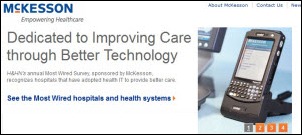

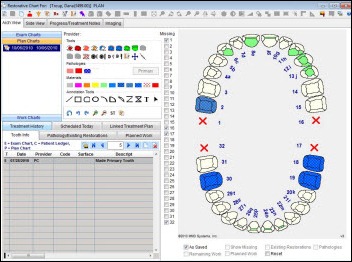


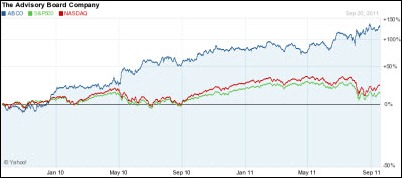





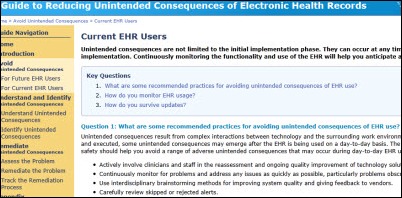
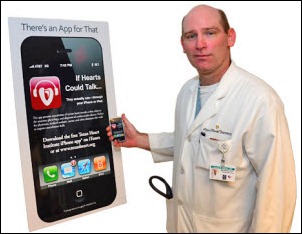
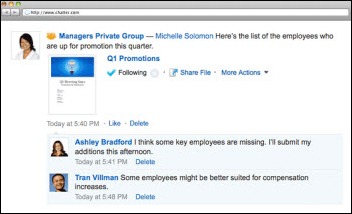




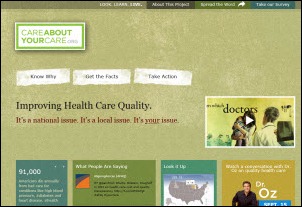


HCCI is legitimately an interesting story. Really too bad it too this long and for health care costs to get this ramped up for something like this to happen. Should have happened several years ago. I would be curious to find out more regarding the timing of when this began to take shape. I would bet money it was shortly after the healthcare reform bill passed.
Still going to be missing pieces of a fair amount of data from the private side though. Cigna is glaringly absent. Ditto any of the Medicaid managed care (e.g., Centene, Amerigroup) folks which is a shame since there is a lot of growth as more and more Medicaid is rapidly moving over to some form of Medicaid managed care. I can’t imagine that the Blues will play nice & share any time soon. ‘Have to start somewhere’ approach though which is very true in this case.
I know doctors hate the information derived from claims especially anything based on the ICD-9 diagnosis codes which you need to take with a grain of salt for several reasons. Still, there is plenty of useful information that can be derived from claims including meds, hospitalizations, etc. Even with all of the talk of EMRs with meaningful use requirements, health care claims are going to remain the lingua franca of real health care analysis on large-scale populations for the foreseeable future especially with ICD-10 being implemented.
re: documentation standards
” I’d like it even better if standards were in place that would physically protect all electronic documentation transactions from database-level changes, journaling every entry, change, and deletion as a permanent record that even IT uber geeks could not destroy.”
As a clinical system developer, I always thought this WAS the standard for electronic charting. That a system never iintentionally overwrote documentation data but it was handled as an addendum – with an ID/DTTM trail. The ‘you cannot use whiteout to change documentation’ from paper charting- implemented electronically. Are you saying that there are systems in use that DO OVERWRITE? That’s a tremendously scarey thought.
[From Mr. H] I wasn’t thinking about system design (although that could well be a problem in some systems), but rather someone going to a DBA and giving them instructions to alter the table values directly via SQL. I can see that happening in an off-the-record way if there was organizational image or lawsuit potential on the line.
RE: “In getting your ‘certified’ system and achieving MU, what happens if the user decides to change vendors? During that kind of transition, you would expect your reporting on objectives could be impacted and you might not meet them for the year. Do you incur penalties from Medicare during that time?”
As might be expected this and many other similar nitty-gritty issues are not addressed by ONC, but from reading the current regs and FAQs it would seem as long as you are swapping the old system for a new certified system you should be OK. If in the transition you mess up tracking some QA measures that could be a problem (if the AA auditor stumbles on it starting next year).
Also keep in mind you can meet MU criteria in multiple ways. For example you are running a certified LIS and a certified EMR from different vendors. Let’s say you replace the LIS with another best of breed product, so during that transition for the lab related portions of MU you are covered by the EMR. Now if you replace the certified LIS with a non-certified LIS you could get in trouble depending how the interfaces/links to MU and QA measures are set up.
“If the family is correct, UPMC’s own electronic records will provide the inarguable evidence. Score: EMR 1, paper 0.”
pot on revelation. One should not alter the medical records, whether they be paper or computerized, when performing “peer review”